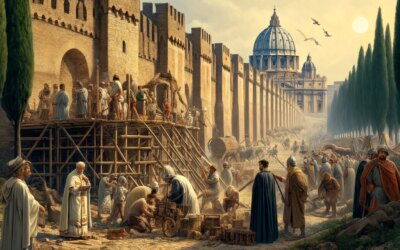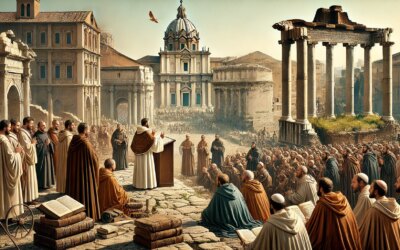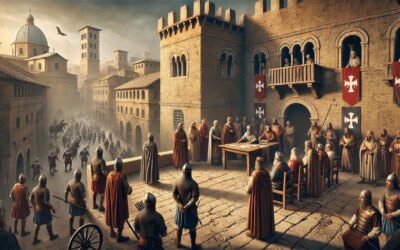The Clash Between Church and Empire
In the late 11th century, a power struggle erupted between the papacy and the Holy Roman Emperor over the appointment of bishops and abbots. Known as the Investiture Controversy, this conflict would redefine the relationship between church and state, shaking the foundations of medieval Europe. At the center of the dispute stood Pope Gregory VII and Emperor Henry IV, two leaders whose clash would lead to excommunications, rebellions, and one of the most famous humiliations in history.
The Root of the Conflict
Since the early Middle Ages, secular rulers had played a significant role in appointing bishops and abbots, a practice known as lay investiture. This meant that kings and emperors controlled key religious positions, ensuring their political loyalty. However, reform movements within the church sought to end this interference, arguing that only the pope had the authority to appoint clergy.
In 1073, Hildebrand of Sovana was elected Pope Gregory VII. A staunch reformer, he issued the Dictatus Papae in 1075, declaring that the pope held supreme authority over the church and could depose emperors if necessary. This directly challenged Henry IV, the ruler of the Holy Roman Empire, who saw investiture as a key imperial right.
Henry IV’s Defiance and Excommunication
Angered by Gregory’s assertions, Henry IV convened a council of German bishops in Worms in 1076, declaring the pope deposed. In response, Gregory VII excommunicated Henry, stripping him of his authority and encouraging rebellion among his vassals. This marked a turning point—never before had a pope directly undermined an emperor’s legitimacy in such a way.
The excommunication caused an uproar in Germany, where nobles, sensing an opportunity, turned against Henry. Realizing the threat to his throne, the emperor took an unprecedented step.
The Humiliation at Canossa
In January 1077, Henry IV traveled to Canossa, a fortress in northern Italy, where Pope Gregory VII was staying. Dressed as a penitent, Henry stood barefoot in the snow for three days, pleading for forgiveness. The dramatic scene symbolized the pope’s victory—Gregory had forced the most powerful monarch in Europe to submit.
However, the conflict was far from over. Though Gregory lifted the excommunication, tensions remained. Henry regained power, invaded Italy, and eventually forced Gregory into exile. The pope died in 1085, but the battle over investiture continued.
The Legacy of the Investiture Controversy
The struggle between church and empire persisted for decades until the Concordat of Worms in 1122, which reached a compromise: emperors retained some influence, but the church gained greater autonomy in selecting its leaders.
The Investiture Controversy was a turning point in European history. It established the precedent that secular rulers could not control the church, paving the way for future conflicts over the balance of power between religious and political authorities. The echoes of this struggle would be felt throughout the medieval and modern eras, shaping the course of European governance for centuries to come.





